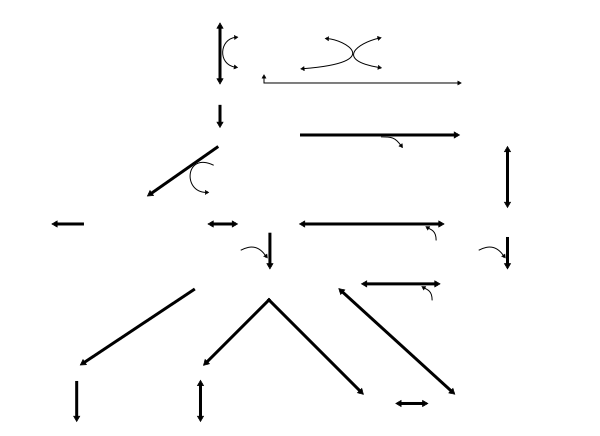beta-Hydroxybutyric acid
β-Hydroxybutyric acid, also known as 3-hydroxybutyric acid, is an organic compound and a beta hydroxy acid with the chemical formula CH3CH(OH)CH2CO2H; its conjugate base is β-hydroxybutyrate, also known as 3-hydroxybutyrate. β-Hydroxybutyric acid is a chiral compound with two enantiomers: D-β-hydroxybutyric acid and L-β-hydroxybutyric acid. Its oxidized and polymeric derivatives occur widely in nature. In humans, D-β-hydroxybutyric acid is one of two primary endogenous agonists of hydroxycarboxylic acid receptor 2 (HCA2), a Gi/o-coupled G protein-coupled receptor (GPCR).[1][2]
 | |
| Names | |
|---|---|
| IUPAC name
3-Hydroxybutanoic acid | |
| Identifiers | |
CAS Number |
|
3D model (JSmol) |
|
| 3DMet | |
Beilstein Reference |
773861 |
| ChEBI | |
| ChEMBL | |
| ChemSpider | |
| ECHA InfoCard | 100.005.546 |
| KEGG | |
| MeSH | beta-Hydroxybutyrate |
PubChem CID |
|
| UNII | |
InChI
| |
SMILES
| |
| Properties | |
Chemical formula |
C4H8O3 |
| Molar mass | 104.105 g·mol−1 |
| Appearance | white solid |
| Melting point | 44-46 |
| Related compounds | |
Other anions |
hydroxybutyrate |
Related carboxylic acids |
propionic acid lactic acid 3-hydroxypropanoic acid malonic acid hydroxypentanoic acid butyric acid β-methylbutyric acid β-hydroxy β-methylbutyric acid |
Related compounds |
erythrose threose 1,2-butanediol 1,3-butanediol 2,3-butanediol 1,4-butanediol |
Except where otherwise noted, data are given for materials in their standard state (at 25 °C [77 °F], 100 kPa). | |
| Infobox references | |
Biosynthesis
In humans, D-β-hydroxybutyrate can be synthesized in the liver via the metabolism of fatty acids (e.g., butyrate), β-hydroxy β-methylbutyrate, and ketogenic amino acids through a series of reactions that metabolize these compounds into acetoacetate, which is the first ketone body that is produced in the fasting state. The biosynthesis of D-β-hydroxybutyrate from acetoacetate is catalyzed by the β-hydroxybutyrate dehydrogenase enzyme.
Butyrate can also be metabolized into D-β-hydroxybutyrate via a second metabolic pathway that does not involve acetoacetate as a metabolic intermediate. This metabolic pathway is as follows:[3]
- butyrate→butyryl-CoA→crotonyl-CoA→β-hydroxybutyryl-CoA→poly-β-hydroxybutyrate→D-β-(D-β-hydroxybutyryloxy)-butyrate→D-β-hydroxybutyrate
The last reaction in this metabolic pathway, which involves the conversion of D-β-(D-β-hydroxybutyryloxy)-butyrate into D-β-hydroxybutyrate, is catalyzed by the hydroxybutyrate-dimer hydrolase enzyme.[3]
The concentration of β-hydroxybutyrate in human blood plasma, as with other ketone bodies, increases through ketosis.[4] This elevated β-hydroxybutyrate level is naturally expected, as β-hydroxybutyrate is formed from acetoacetate. The compound can be used as an energy source by the brain when blood glucose is low.[5] Diabetic patients can have their ketone levels tested via urine or blood to indicate diabetic ketoacidosis. In alcoholic ketoacidosis, this ketone body is produced in greatest concentration. Ketogenesis occurs if oxaloacetate in the liver cells is depleted, a circumstance created by reduced carbohydrate intake (through diet or starvation); prolonged, excessive alcohol consumption; and/or insulin deficiency. Because oxaloacetate is crucial for entry of acetyl-CoA into the TCA cycle, the rapid production of acetyl-CoA from fatty acid oxidation in the absence of ample oxaloacetate overwhelms the decreased capacity of the TCA cycle, and the resultant excess of acetyl-CoA is shunted towards ketone body production.
Biological activity
D-β-Hydroxybutyric acid, along with butyric acid, are the two primary endogenous agonists of hydroxycarboxylic acid receptor 2 (HCA2), a Gi/o-coupled GPCR.[1][2][9]
β-Hydroxybutyric acid is able to cross the blood-brain-barrier into the central nervous system.[10] Levels of β-hydroxybutyric acid increase in the liver, heart, muscle, brain, and other tissues with exercise, calorie restriction, fasting, and ketogenic diets.[10] The compound has been found to act as a histone deacetylase (HDAC) inhibitor.[10] Through inhibition of the HDAC class I isoenzymes HDAC2 and HDAC3, β-hydroxybutyric acid has been found to increase brain-derived neurotrophic factor (BDNF) levels and TrkB signaling in the hippocampus.[10] Moreover, a rodent study found that prolonged exercise increases plasma β-hydroxybutyrate concentrations, which induces promoters of the BDNF gene in the hippocampus.[10] These findings may have clinical relevance in the treatment of depression, anxiety, and cognitive impairment.[10]
In epilepsy patients on the ketogenic diet, blood β-hydroxybutyrate levels correlate best with degree of seizure control. The threshold for optimal anticonvulsant effect appears to be approximately 4 mmol/L.[11]
Laboratory and industrial chemistry
β-Hydroxybutyric acid is the precursor to polyesters, which are biodegradable plastics. This polymer, poly(3-hydroxybutyrate), is also naturally produced by the bacteria Alcaligenes eutrophus.[12]
β-Hydroxybutyrate can be extracted from poly(3-hydroxybutyrate) by acid hydrolysis.[13]
The concentration of β-hydroxybutyrate in blood plasma is measured through a test that uses β-hydroxybutyrate dehydrogenase, with NAD+ as an electron-accepting cofactor. The conversion of β-hydroxybutyrate to acetoacetate, which is catalyzed by this enzyme, reduces the NAD+ to NADH, generating an electrical change; the magnitude of this change can then be used to extrapolate the amount of β-hydroxybutyrate in the sample.
See also
- Hydroxybutyric acid
- Ketogenesis
- Gamma-Hydroxybutyric acid
References
- Offermanns S, Colletti SL, Lovenberg TW, Semple G, Wise A, IJzerman AP (June 2011). "International Union of Basic and Clinical Pharmacology. LXXXII: Nomenclature and Classification of Hydroxy-carboxylic Acid Receptors (GPR81, GPR109A, and GPR109B)". Pharmacological Reviews. 63 (2): 269–90. doi:10.1124/pr.110.003301. PMID 21454438.
- Offermanns S, Colletti SL, IJzerman AP, Lovenberg TW, Semple G, Wise A, Waters MG. "Hydroxycarboxylic acid receptors". IUPHAR/BPS Guide to Pharmacology. International Union of Basic and Clinical Pharmacology. Retrieved 13 July 2018.
- "Butanoate metabolism - Reference pathway". Kyoto Encyclopedia of Genes and Genomes. Kanehisa Laboratories. 1 November 2017. Retrieved 1 February 2018.
- Perelas A, Staros EB (October 30, 2015). "Beta-Hydroxybutyrate". Medscape. WebMD LLC. Retrieved February 8, 2017.
- O. E. Owen; et al. (1967). "Brain Metabolism during Fasting". The Journal of Clinical Investigation. 46 (10): 1589–1595. doi:10.1172/JCI105650. PMC 292907. PMID 6061736.
- "KEGG Reaction: R10759". Kyoto Encyclopedia of Genes and Genomes. Kanehisa Laboratories. Retrieved 24 June 2016.
- Mock DM, Stratton SL, Horvath TD, Bogusiewicz A, Matthews NI, Henrich CL, Dawson AM, Spencer HJ, Owen SN, Boysen G, Moran JH (November 2011). "Urinary excretion of 3-hydroxyisovaleric acid and 3-hydroxyisovaleryl carnitine increases in response to a leucine challenge in marginally biotin-deficient humans". primary source. The Journal of Nutrition. 141 (11): 1925–1930. doi:10.3945/jn.111.146126. PMC 3192457. PMID 21918059.
Metabolic impairment diverts methylcrotonyl CoA to 3-hydroxyisovaleryl CoA in a reaction catalyzed by enoyl-CoA hydratase (22, 23). 3-Hydroxyisovaleryl CoA accumulation can inhibit cellular respiration either directly or via effects on the ratios of acyl CoA:free CoA if further metabolism and detoxification of 3-hydroxyisovaleryl CoA does not occur (22). The transfer to carnitine by 4 carnitine acyl-CoA transferases distributed in subcellular compartments likely serves as an important reservoir for acyl moieties (39–41). 3-Hydroxyisovaleryl CoA is likely detoxified by carnitine acetyltransferase producing 3HIA-carnitine, which is transported across the inner mitochondrial membrane (and hence effectively out of the mitochondria) via carnitine-acylcarnitine translocase (39). 3HIA-carnitine is thought to be either directly deacylated by a hydrolase to 3HIA or to undergo a second CoA exchange to again form 3-hydroxyisovaleryl CoA followed by release of 3HIA and free CoA by a thioesterase.
- "Valine, leucine and isoleucine degradation - Reference pathway". Kyoto Encyclopedia of Genes and Genomes. Kanehisa Laboratories. 27 January 2016. Retrieved 1 February 2018.
- "β-D-hydroxybutyric acid: Biological activity". IUPHAR/BPS Guide to Pharmacology. International Union of Basic and Clinical Pharmacology. Retrieved 5 February 2018.
- Sleiman SF, Henry J, Al-Haddad R, El Hayek L, Abou Haidar E, Stringer T, Ulja D, Karuppagounder SS, Holson EB, Ratan RR, Ninan I, Chao MV (2016). "Exercise promotes the expression of brain derived neurotrophic factor (BDNF) through the action of the ketone body β-hydroxybutyrate". eLife. 5. doi:10.7554/eLife.15092. PMC 4915811. PMID 27253067.
- Gilbert DL, Pyzik PL, Freeman JM (2000). "The ketogenic diet: seizure control correlates better with serum beta-hydroxybutyrate than with urine ketones". Journal of Child Neurology. 15 (3): 787–790. doi:10.1177/088307380001501203. PMID 11198492.
- Yoshiharu Doi; Masao Kunioka; Yoshiyuki Nakamura; Kazuo Soga (1988). "Nuclear magnetic resonance studies on unusual bacterial copolyesters of 3-hydroxybutyrate and 4-hydroxybutyrate". Macromolecules. 21 (9): 2722–2727. doi:10.1021/ma00187a012.
- Dieter Seebach, Albert K. Beck, Richard Breitschuh, and Kurt Job "Direct Degradation of the Biopolymer Poly[(R)-3-Hydroxybutrric Acid to (R)-3-Hydroxybutanoic Acid and Its Methyl Ester" Org. Synth. 1993, 71, 39. doi:10.15227/orgsyn.071.0039
